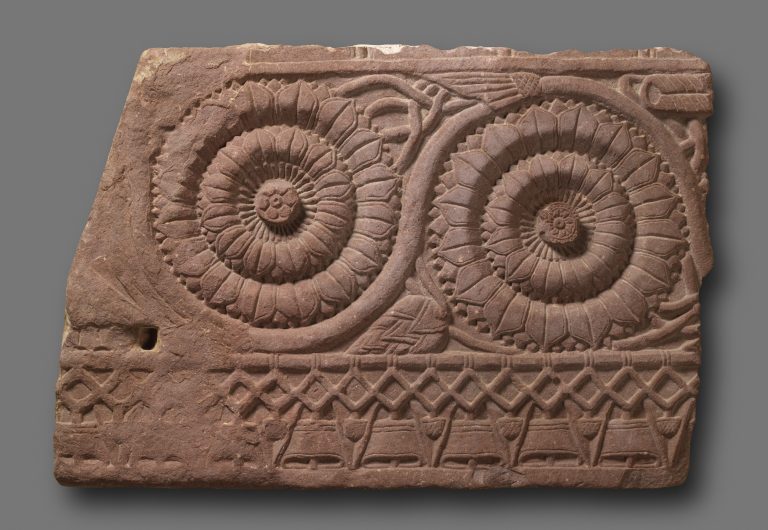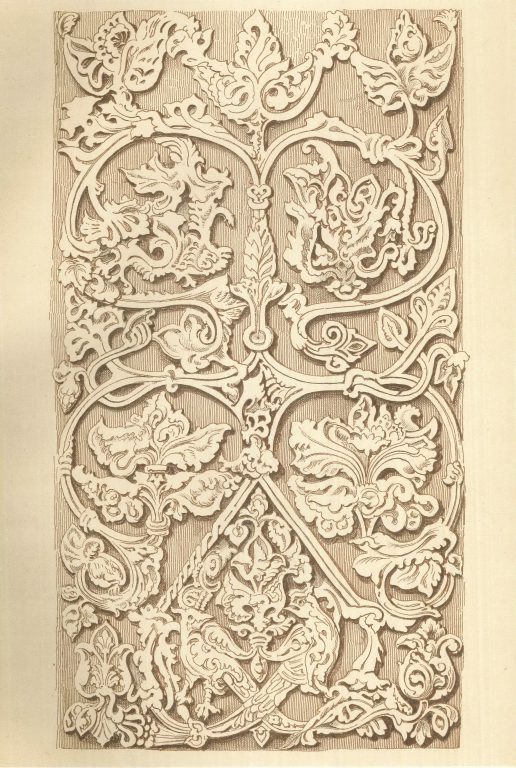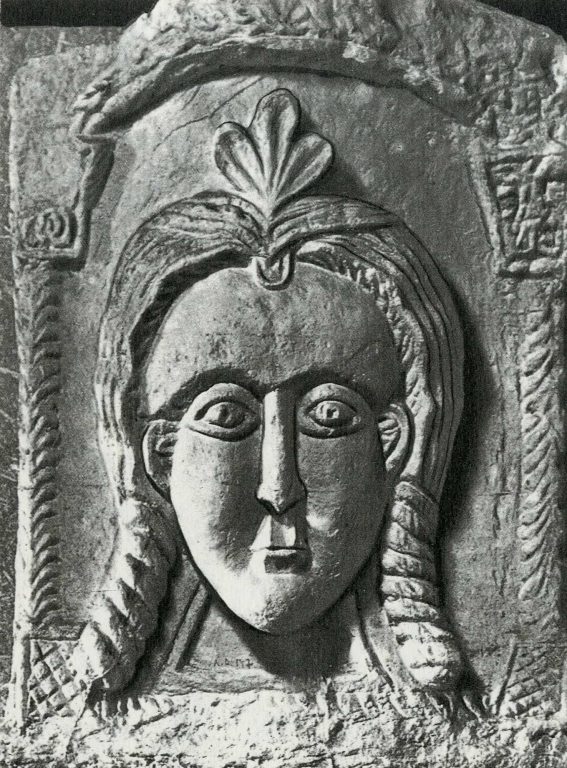
ca. 1st century B.C.

India
Object qualities
-
Objectreligious building decoration: Architectural relief
-
Type of arts & crafts
-
MediumRed sandstone
-
SizeH. 14 7/8 in. (37.8 cm); W. 21 1/2 in. (54.6 cm); D. 2 1/2 in. (6.3 cm)
-
Geography details
India -
Country today
-
Dateca. 1st century B.C.
-
CultureIndia (Madhya Pradesh)
-
PeriodShunga period
Source of information
-
Type of sourceDatabase “Metropolitan Museum of Art”
-
Fund that the source refers toMetropolitan Museum of Art
Description
-
These lotuses were part of a wish-fulfilling vine at the top of a high railing (vedika), which enclosed the sacred precinct of the Bharhut stupa (relic mound). This vedika was also embellished with some of the earliest reliefs illustrating past lives of the Buddha (jatakas), depictions of major life events, and local deities (yakshis and yakshas). The lotus is an auspicious symbol that alludes to the Buddha’s enlightenment. The row of hanging bells at the bottom is likely a translation into stone of an earlier actual architectural embellishment.
Reconstructions of this ornament



























